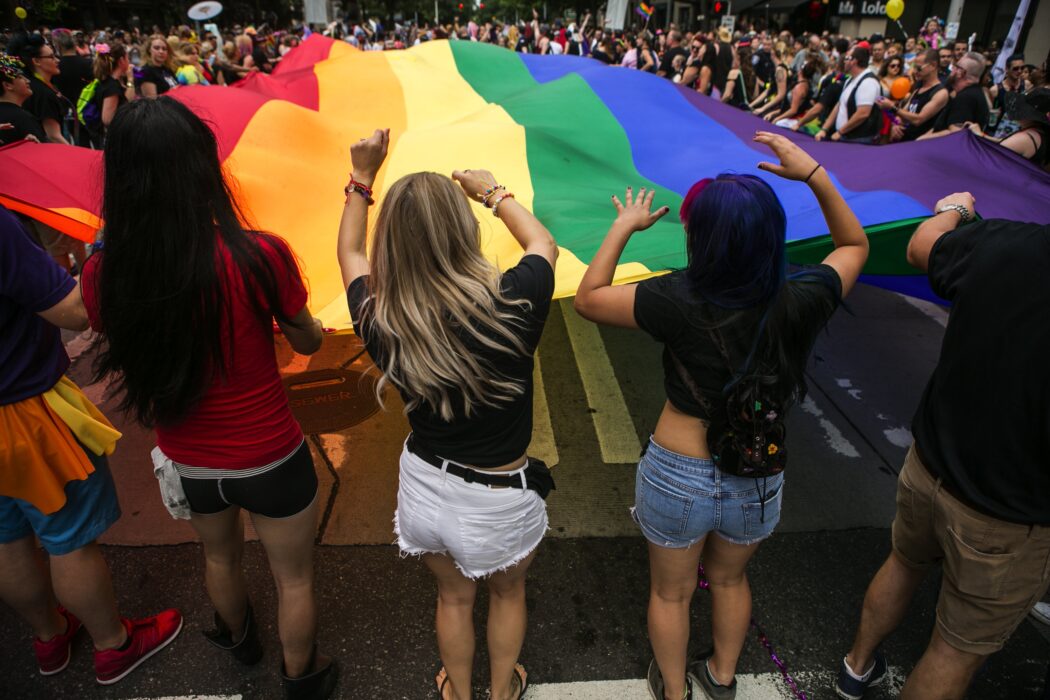Opinion: Why LGBTQ+ in kids’media is important
When I was a kid, I was obsessed with the Disney Channel show “Phineas and Ferb” (2007-2012). I thought — and still think — the show was incredible and made a point to watch it every day. As a child captivated by romance, I lived for the love between two of the main characters, Phineas and Isabella.
However, no one would assume that this romance was pushing a sexual orientation onto me.
More people than ever feel comfortable identifying as part of the LGBTQ+ community and as society continues to progress, this number is likely to continue growing.
With an increase in people speaking out about identifying as queer, the media has also seen an increase in queer representation. Notable movies such as 20th Century Studios’ “Love, Simon” (2018) and shows such as Netflix’s “Heartstopper” (2022-present) have showcased queer lead characters to help more of the population feel represented.
This representation has spread to kids’ media as well, but this seems to be where the biggest controversy lies.
Disney shows like “Gravity Falls” (2021-2016) and “Good Luck Charlie” (2010-2014) were criticized for including same-sex couples as background characters. When rumors surfaced about Elsa from Disney’s “Frozen” (2013) being queer, there was pushback.
So, when Disney’s “The Owl House” (2020-2023) featured the first canonically bisexual lead in a cartoon, people were angry.
A common argument against queer representation in kids’ media is that it’s enticing the kids watching to identify as queer as well.
In reality, sexual orientation is determined by brain chemistry and non-social environmental factors. In other words, the media and other people are both factors that do not contribute to sexual orientation.
Furthermore, the goal of queer representation in kids’ media is not to encourage kids to change their sexuality. Instead, the goal is to help more children feel seen and comfortable being themselves.
It’s no news that representation matters. People feel more comfortable with themselves when they see others like them, especially on a large scale. When people have others that they can identify with, they feel less alone, lowering levels of depression and anxiety.
Kids’ media is no different, and a variety of representations in such is perhaps even more important. With kids still learning how to feel about themselves, understanding that there are other people like them can help counter feelings of loneliness and isolation.
On the flip side, kids who don’t identify as queer can learn from LGBTQ+ representation as well. As kids are still discovering their place in society, learning that there are people different from them encourages empathy and discourages prejudice.
At the end of the day, people feel more comfortable when they have things and people they can relate to. This isn’t different for kids. In fact, having this connection with other people, even if they are fictional, from a young age can help children as they move through life.
I’m not straight because I watched Phineas and Isabella kiss, just like my friend isn’t lesbian because she saw Luz and Amity hold hands in “The Owl House.” However, she does feel more seen, and I do feel more empathetic. Both of us feel better.
USU has been working to provide a more comfortable atmosphere for students who identify as LGBTQ+. The campus Inclusion Center works with queer healthcare providers to help students have access to important resources. There are also clubs such as the Queer Student Alliance and programs like Allies on Campus, as well as a LGBTQ+ support group that meets weekly. For more information or help, contact inclusion@usu.edu.

